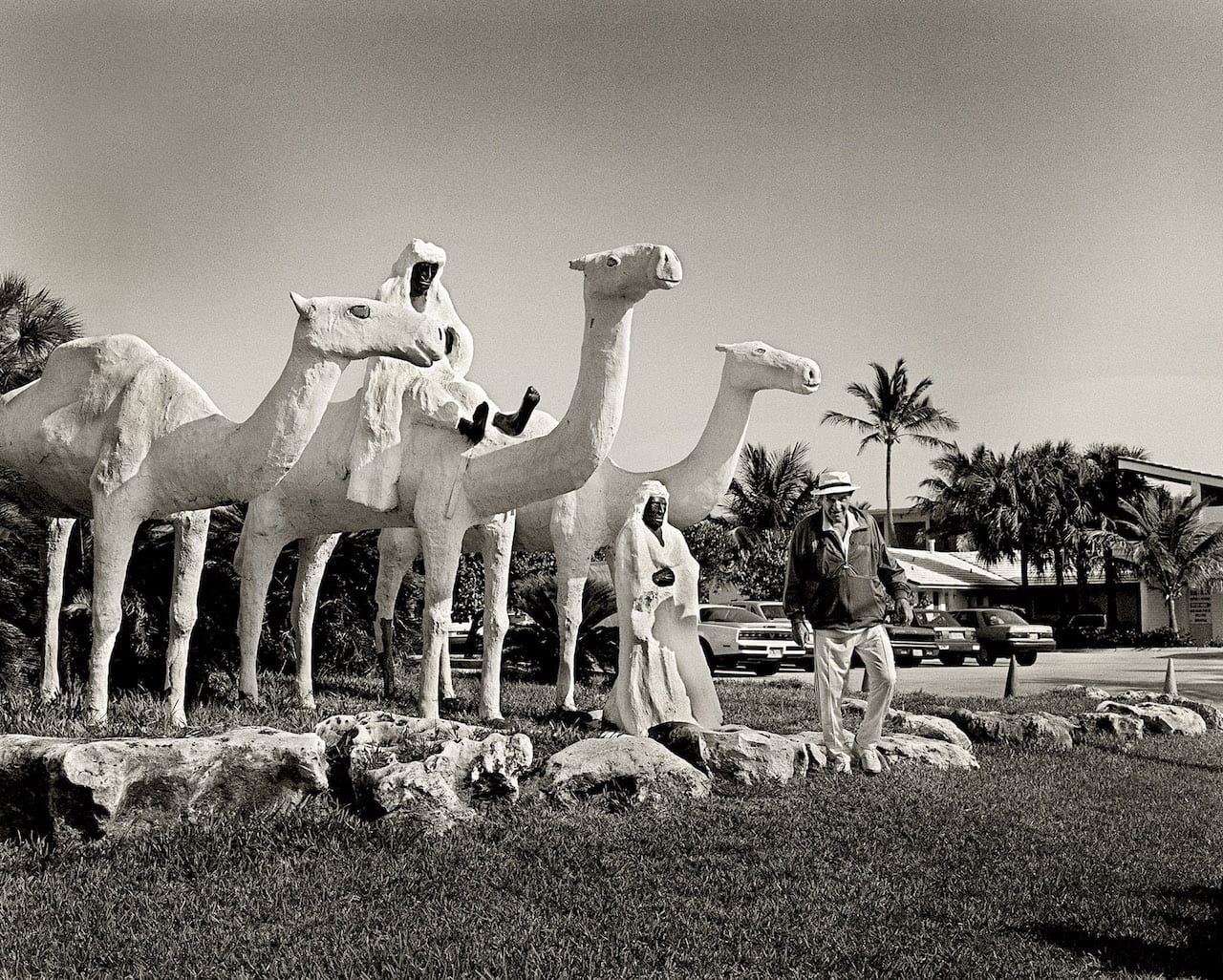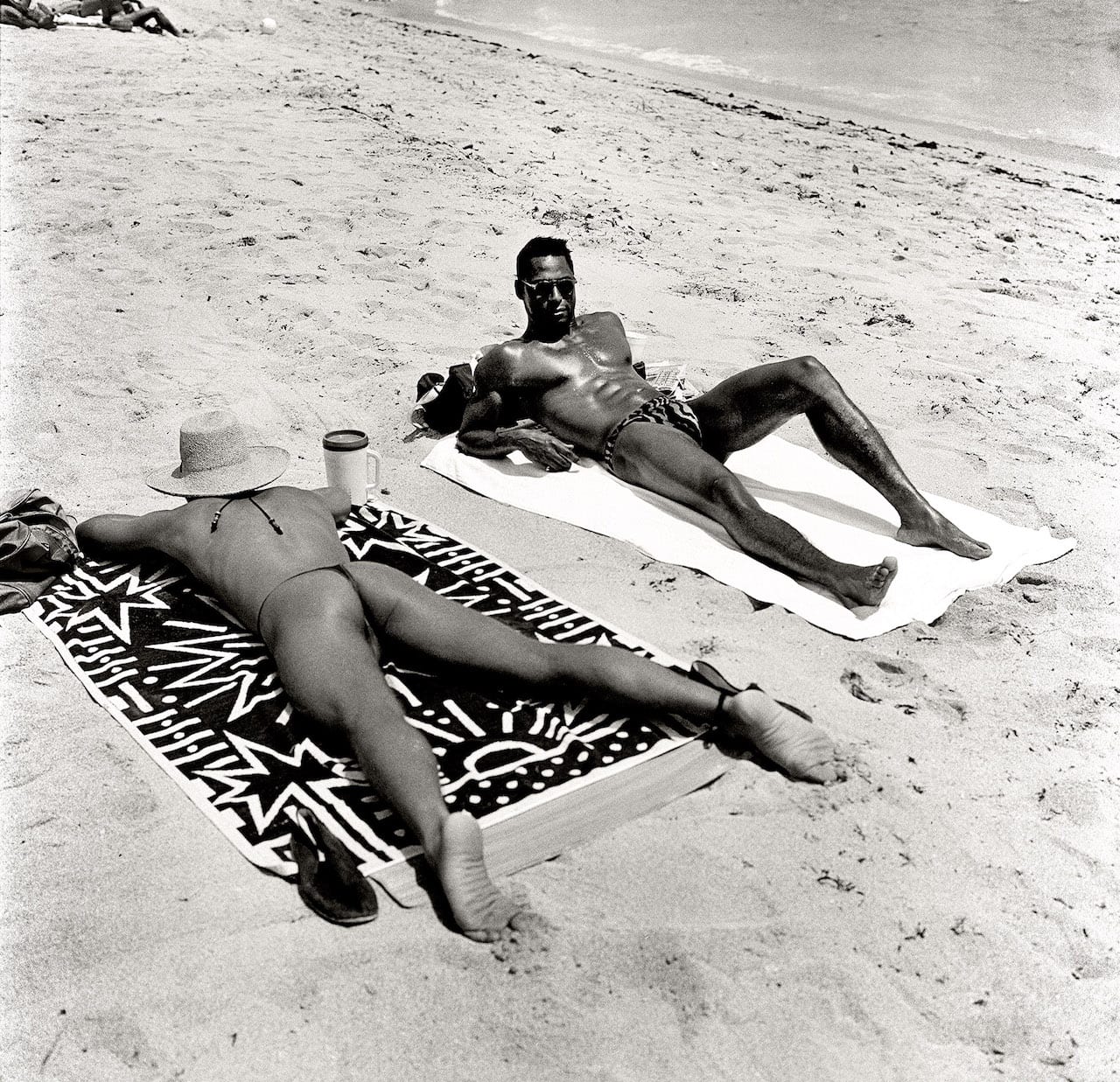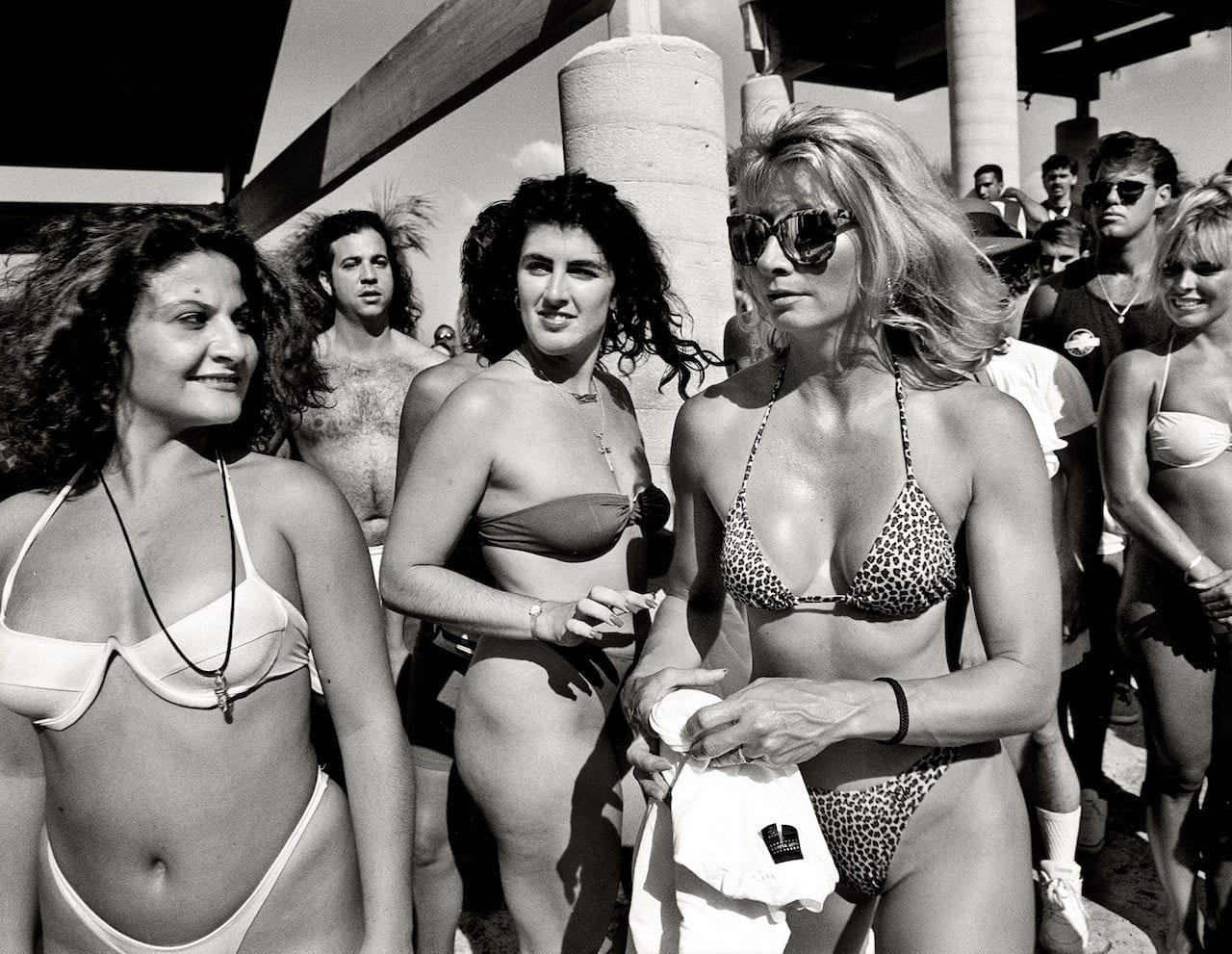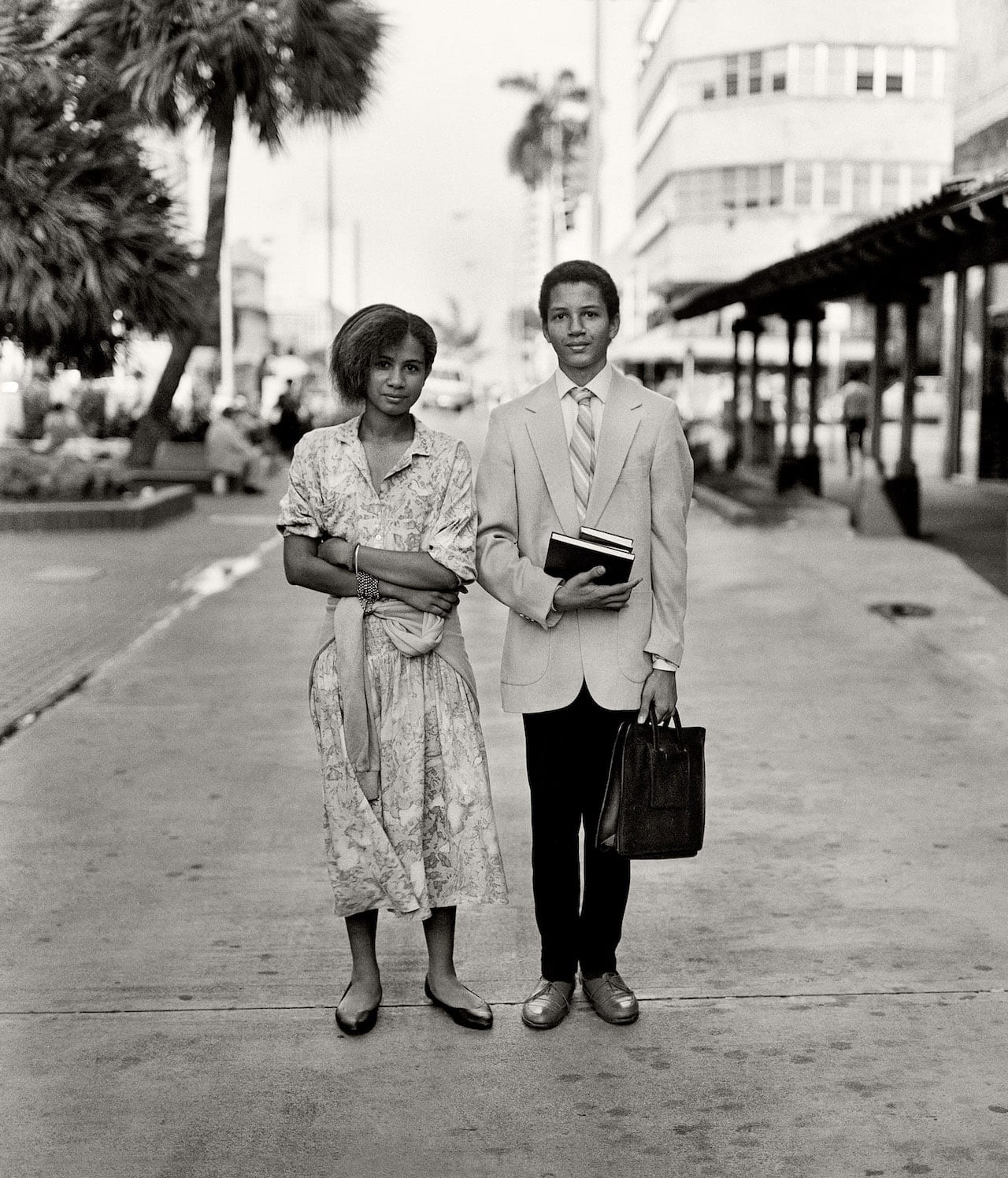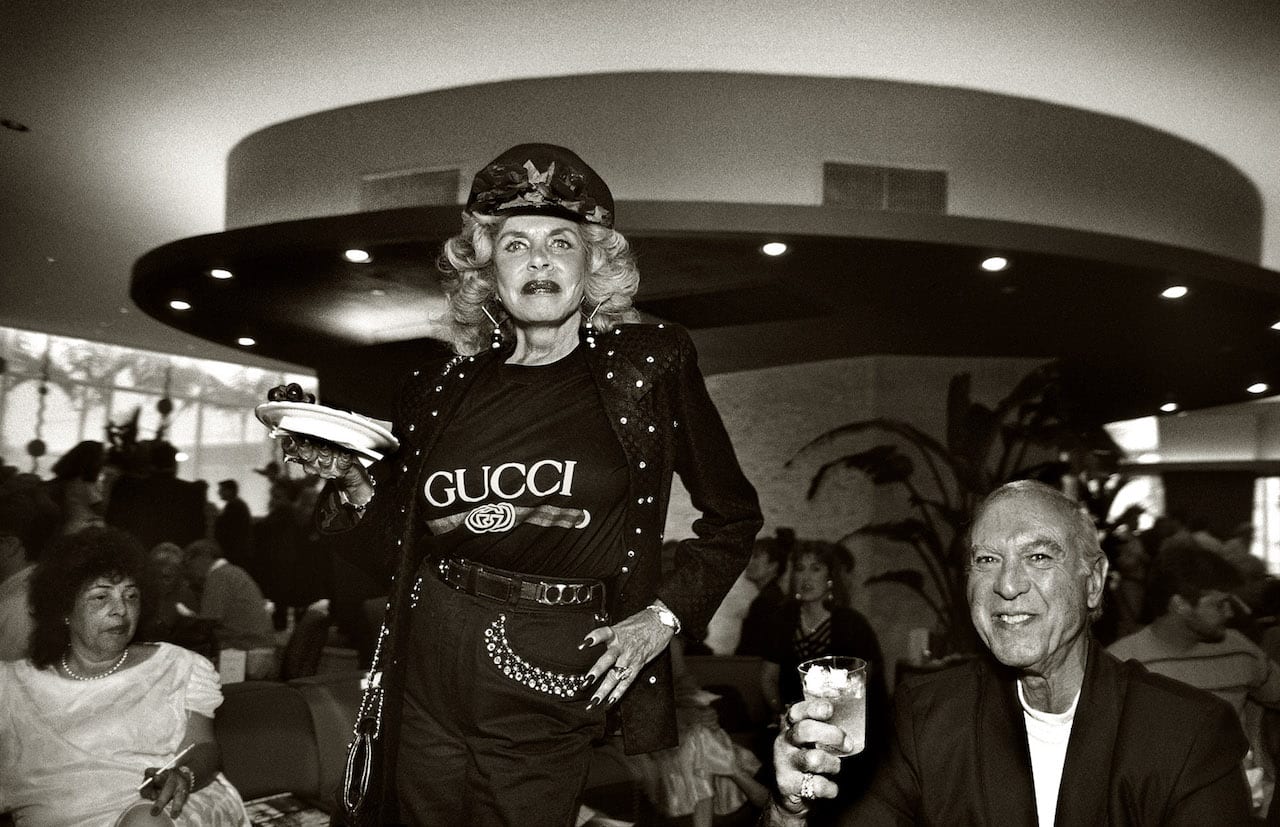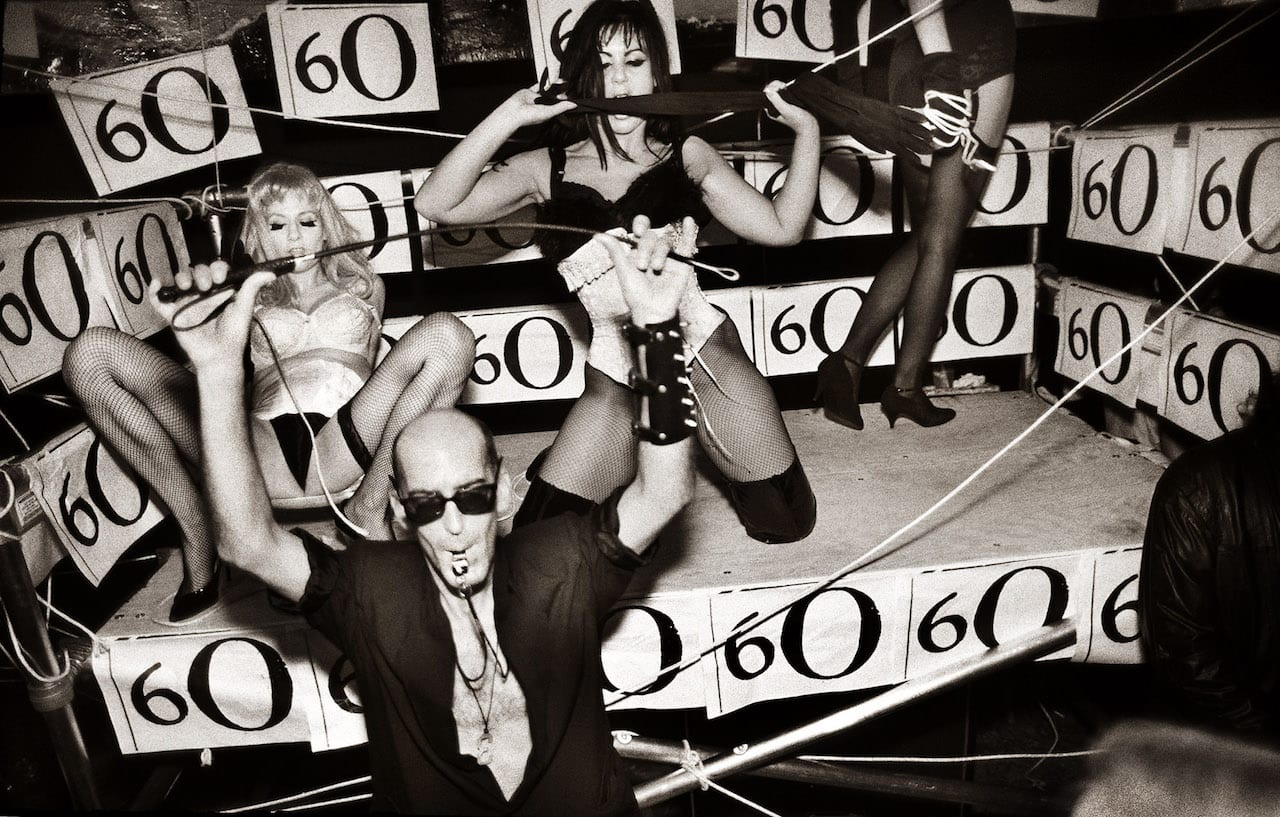“My tropical adventure was started by a friend, the photographer Mary Ellen Mark, who in 1988, enthused to me about Miami Beach, ‘You are made for each other!’” says Barry Lewis. That summer, the photographer travelled to Miami for a short family holiday. “I met up with several photographers and by the end of the trip had a share in a fading Art Deco apartment on the beach,” he says.
So began an ongoing love affair for Lewis, who ended up documenting South Beach for the next seven years, using Miami as a base for his US work and a venue for family winter escapes. It was, as he points out, a city on the up, just starting to revive after a couple of decades in the doldrums.
First to arrive were the so-called ‘Snowbirds’, Jewish retirees attracted by the warm weather and the cheap rents in the Art Deco beach hotels and rooming houses. The same factors encouraged a thriving LGBT community to move in, taking the short plane ride from New York; added to that, thousands of Cubans pitched up in Florida after Castro emptied the jails of criminals, drug addicts, gays and politicos.
“Mix all these ingredients with vast quantities of cheap cocaine and the stage was set for documenting this ‘can-do’ optimism, Bush’s America,” comments Lewis, adding that this potent mix had soon pulled in the fashion crowd, with Gianni Versace becoming one of South Beach’s most famous inhabitants.
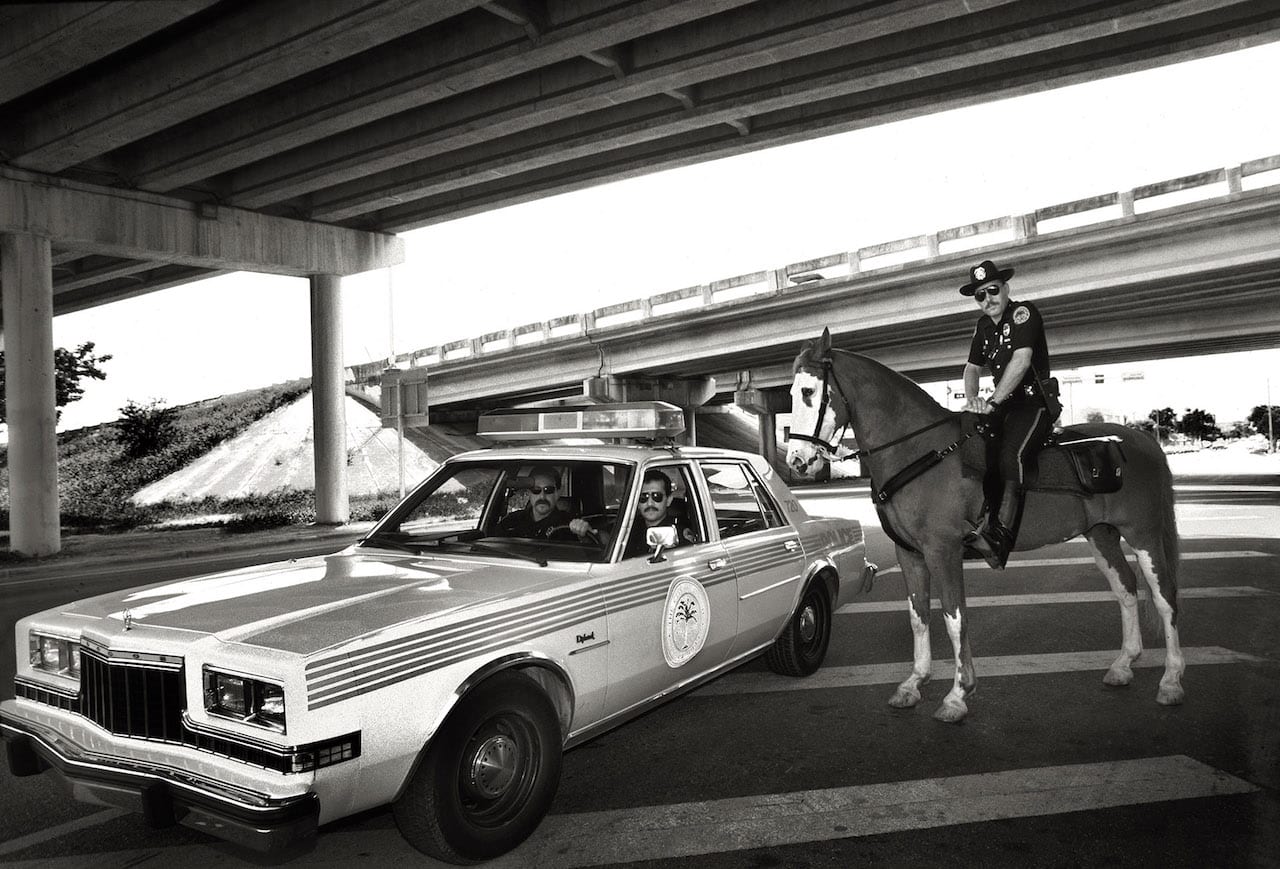
A busy photojournalist, Lewis was by now largely shooting his commissions in 35mm colour but, shooting Miami for his own satisfaction, decided to work with medium format black-and-white, using an old Rolleiflex and a Bronica and working in a “slower, more considered way”. His images were caught on the fly, however, and show people on the street – or the beach, or in the club – seemingly unaware or completely accepting of his presence.
“Most of the time people don’t mind being photographed if you have a certainty and a conviction that what you’re doing matters,” he says. “The thing that stops you taking a picture is yourself. If you feel sure of what you’re doing, you have a confidence and a story to rationalise that strange ritual of encountering a stranger and taking their picture.
“In that moment you are like a fly, hovering around someone, unconsciously encouraging and flattering them, with such a strong believe in what you are doing (whether correct or not) that your momentum of conviction creates a spell of sharing a moment together.”
Lewis gained this insight photographing the New Orleans Mardi Gras, when he drank what he thought was a shot of vodka and found himself on a seven-hour trip. Able to keep shooting throughout the ensuing madness, his other big realisation was that it’s possible “to be totally off your face but still have the discipline of photography, a sort of there but not there”.
“I believe all good photographers have a chameleon-like ability, conscious and instinctive, to blend in and reflect both the vanity and uncertainty of their subjects,” he adds. “The way we do this depends on the individual photographer…we all have our methods and we all have our uncertainties.
“If I am rebuffed at the start of a photographic street encounter it can throw me out all day but on the other hand once you are in the zone, you have an instinctive certainty that carries you along.”
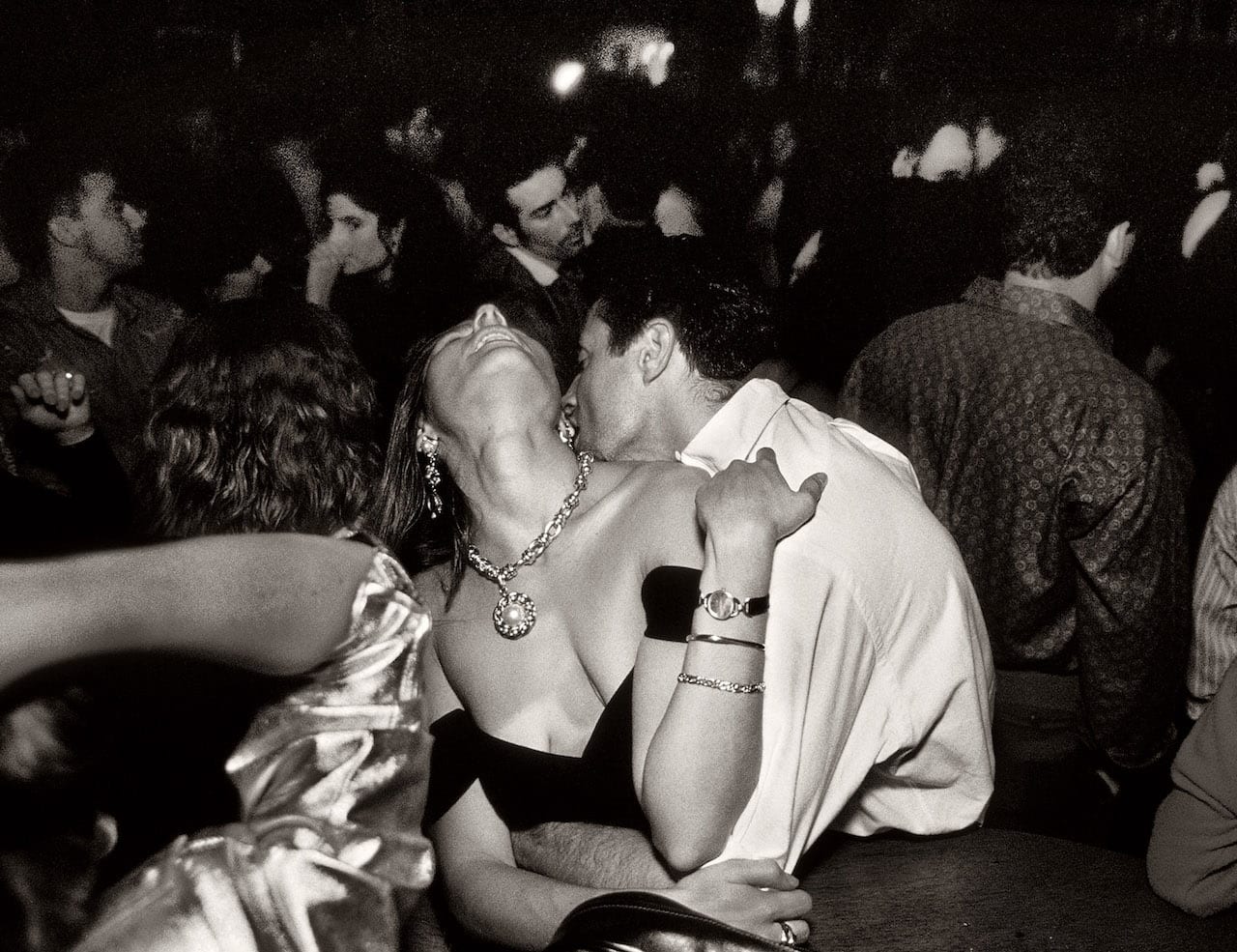
Lewis amassed thousands of images of Miami Beach over the years but, aside from publishing a few in a couple of local magazines, they went unseen for years. Even so, he knew he had got something interesting, and when he heard Martin Osborne from Hoxton Mini Press giving a talk about expanding the publisher’s remit beyond London, realised the project’s time had come. Getting in touch with Osborne, he found himself with a book project on his hands, and went back to the archive, rescanning all the old negatives he had marked on the contact sheets.
Making a rough dummy, he sat down with Osborne and the HMP designer, Friederike Huber to work on the edit. He was surprised to see how often he had “taken the same picture”, albeit on different days with different subjects, and he also found there were holes in the narrative sequence. Fortunately, he had also taken many colour images in Miami on assignment, so he was able to convert 10 to monochrome to help with the flow and pace.
The result is an intriguing window on history, that Lewis is happy to admit has bettered with age. “Going back to the pictures was a bit like meeting an old friend – I have a good visual memory but looking back at images from a long time ago, you see things differently,” he says. “The best images have a maturing resonance I often missed in the excitement of the first edit.”
Miami Beach 1988-95 by Barry Lewis is published by Hoxton Mini Press.
